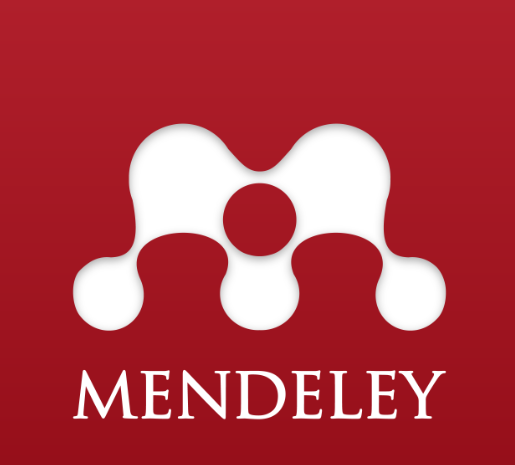Integrating The Working Environment and Social Rewards to Measure Employee Performance
DOI:
https://doi.org/10.22219/mb.v12i02.22554Keywords:
Social Rewards, Physical Environment, Non-Physical Environment, Higher Education Employee, HEPAbstract
The importance of working environment, either physical or non-physical is remain important in todays research avenue. This research integrates the working environment either the physical and non-physical environment with social rewards to compare its effect on employee performance. The study employed quantitative approach involving 252 respondents of higher education employee in Banjarmasin. The data analysed using multi linear regression to test the hypotheses. The results of this study indicates that physical environment doesn’t support the hypotheses. However the results also indicates that social rewards is the most considerable variable comparing to non-physical work environment. This research contributes to the current literature by integrating the work environment and social rewards. Further discussion is organized by introduction section, literature review, methodology, results and discussion and conclusion.
Downloads
References
Bambang, P., & Jannah, L. M. (2005). Metode penelitian kuantitatif: teori dan aplikasi. Jakarta: PT Raja Grafindo Persada.
Creswell, J. W. (2009). Mapping the field of mixed methods research. Journal of mixed methods research, 3(2), 95-108.
Husaini, H., Awalia, R., & Marlinae, L. (2016). Analisis Pengaruh Faktor Lingkungan dan Motivasi terhadap Kepuasan Kerja di Pelayanan Kesehatan RSUD Banjarbaru. Analisis Pengaruh Faktor Lingkungan dan Motivasi terhadap Kepuasan Kerja di Pelayanan Kesehatan RSUD Banjarbaru.
Kadiyono, A. L., Kurniawan, B., Zamrudi, Z., Respatiningsih, H., & Manesi, D. Innovative Supply Chain Management Change And Productive Resistance In Interorganizational Projects. European Journal of Molecular & Clinical Medicine, 7(11), 2020.
Khuzaini, K., & Zamrudi, Z. (2021). Technostress among marketing employee during the COVID-19 pandemic: Exploring the role of technology usability and presenteeism. JEMA: Jurnal Ilmiah Bidang Akuntansi dan Manajemen, 18(1), 36.
Kusuma, A. D. (2017). Pengaruh Linkungan Kerja Fisik Dan Non Fisik Terhadap Kinerja Karyawan Dengan Variabel Mediator Kepuasan Kerja (Studi pada Karyawan PT Telkomsel Branch Malang) (Doctoral dissertation, Universitas Brawijaya).
Lamsah, S., & Zamrudi, Z. (2019). Total quality management practices in Indonesian local SME: Understanding the employees Role. HOLISTICA–Journal of Business and Public Administration, 10(2), 129-136.
Levin, A. C. (2005). “Changing the role of workplace design within the business organisation: A model for linking workplace design solutions to business strategies.” Journal of Facilities Management, 3(4), 299–311.
Lewa, E. I. I. K., & Subowo, S. (2005). Pengaruh Kepemimpinan, Lingkungan Kerja Fisik dan Kompensasi terhadap Kinerja Karyawan di PT. Pertamina (Persero) Daerah Operasi Hulu Jawa Bagian Barat, Cirebon. Sinergi: Kajian Bisnis dan Manajemen.
Malek, Stacey L., Shikhar Sarin, and Christophe Haon. "Extrinsic rewards, intrinsic motivation, and new product development performance." Journal of Product Innovation Management 37, no. 6 (2020): 528-551.
Newman, A., & Sheikh, A. Z. (2012). Organizational commitment in Chinese small-and medium-sized enterprises: the role of extrinsic, intrinsic and social rewards. The International Journal of Human Resource Management, 23(2), 349-367.
Olson, B. V. (2015). Does workplace matter? Perceived satisfaction with physical workspace as a driver of worker performance. International Journal of Facility Management, 6(1).
Salah, M. R. A. (2016). The influence of rewards on employees performance. British Journal of Economics, Management & Trade, 13(4), 1-25.
Sarwono, I. (2022). Pengaruh Karakteristik Individu, Komitmen Organisasi Dan Profil Kepemimpinan Terhadap Kinerja Karyawan Dalam Pelaksanaan Work From Home (Wfh) (Studi pada Karyawan Berstatus Sebagai Mahasiswa Universitas Mercu Buana) (Doctoral dissertation, Universitas Mercu Buana Jakarta).
Sedarmayanti, S., & Rahadian, N. (2018). Hubungan Budaya Kerja dan Lingkungan Kerja Terhadap Peningkatan Kinerja Pegawai Pada Lembaga Pendidikan Tinggi. Jurnal Ilmu Administrasi: Media Pengembangan Ilmu Dan Praktek Administrasi, 15(1), 63-77.
Schuler, R. & S. Jackson (2011). Managing Human Resources, Cengage Learning.
Schultz, D. P., & Schultz, S. E. (2020). Psychology and work today: An introduction to industrial and organizational psychology. Routledge.
Sunarto, S. (2009). Teori Keagenan dan Manajemen Laba. Jurnal Ilmiah Kajian Akuntansi, 1(1), 13-28.
Downloads
Published
Issue
Section
License
Copyright (c) 2022 Manajemen Bisnis

This work is licensed under a Creative Commons Attribution 4.0 International License.
Authors who publish with this journal agree to the following terms:
- Authors retain copyright and grant the journal right of first publication with the work simultaneously licensed under a Creative Commons Attribution-ShareAlike 4.0 International License that allows others to share the work with an acknowledgment of the work's authorship and initial publication in this journal.
- Authors are able to enter into separate, additional contractual arrangements for the non-exclusive distribution of the journal's published version of the work (e.g., post it to an institutional repository or publish it in a book), with an acknowledgment of its initial publication in this journal.
- Authors are permitted and encouraged to post their work online (e.g., in institutional repositories or on their website) prior to and during the submission process, as it can lead to productive exchanges, as well as earlier and greater citation of published work (See The Effect of Open Access).

This work is licensed under a Creative Commons Attribution-ShareAlike 4.0 International License.




71.png)





